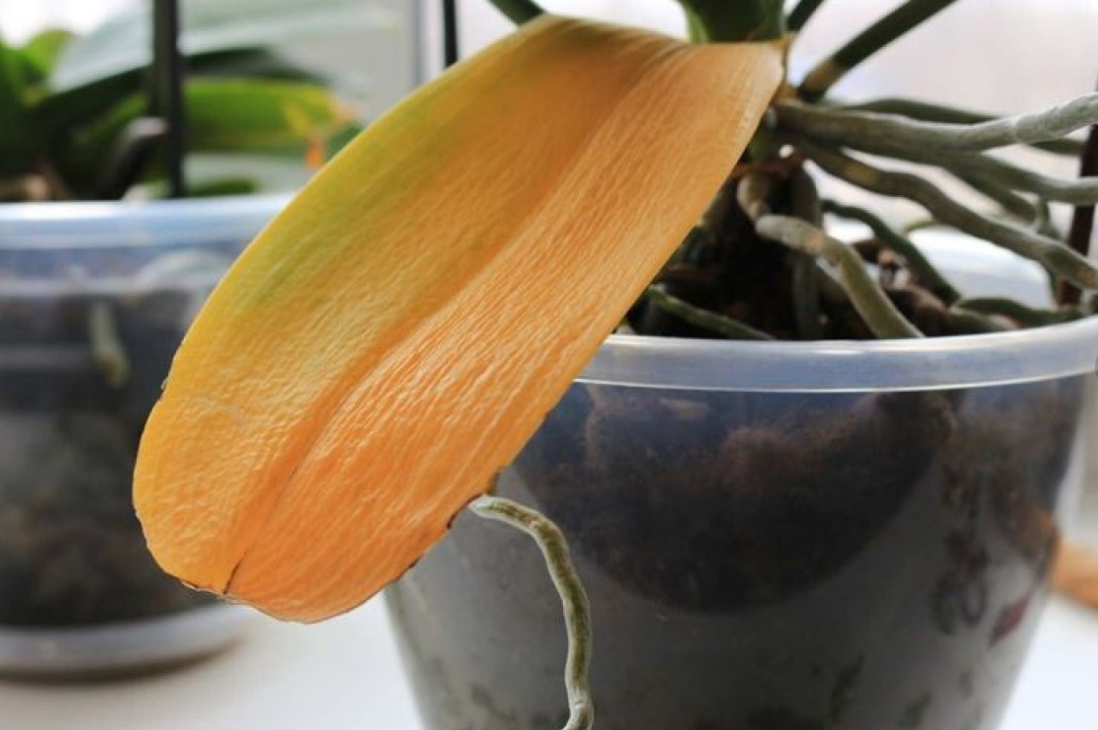
Orchids are some of the most stunning and exotic plants that you can have in your home. However, if you notice yellow leaves appearing on your orchid, it can be concerning. Why are my orchid leaves turning yellow? This is a common question that many orchid owners ask themselves when they see this issue occurring. Yellowing leaves can be a sign of various problems, such as over-watering or under-watering, poor lighting, or even pest infestations. In this guide, we will explore some tips to help you save an orchid with yellow leaves and restore it to its former beauty. With a few simple steps, you can keep your precious orchids thriving and healthy for years to come.
Orchid Leaves Turning Yellow (10 Common Reasons)

If you’re an orchid enthusiast, you know how frustrating it can be to see your precious plants’ leaves turning yellow. This discoloration is never a good sign, and it can indicate a range of problems that need to be addressed as soon as possible. In this article, we’ll explore the 10 most common reasons why an orchid’s leaves turn yellow and what you can do to fix it.
Overwatering
One of the most common culprits behind yellowing orchid leaves is overwatering. Orchids are epiphytes, which means they grow on other plants in their natural habitat and don’t require much water. Too much water can lead to root rot, which in turn causes the leaves to yellow and eventually fall off. To avoid overwatering, make sure your orchid has well-draining soil and only water it when the top inch of soil is dry.
Underwatering
Conversely, underwatering can also cause yellowing leaves. If your orchid isn’t getting enough water, its leaves will become dehydrated and start to turn yellow. Make sure you’re watering your orchid regularly and that it’s getting enough moisture.
Lack of light
Orchids need plenty of light to thrive, but too much direct sunlight can scorch their leaves and cause them to yellow and brown. Make sure your orchid is getting enough indirect light and is placed in a location where it won’t be exposed to harsh, direct sunlight.
Too much fertilizer
Fertilizing your orchid too frequently or with too much fertilizer can lead to a buildup of salts in the soil, which can damage the roots and cause the leaves to yellow. Use a balanced fertilizer and follow the instructions carefully.
Pest infestations
Pests like spider mites, mealybugs, and scale insects can damage your orchid’s leaves and cause them to yellow. Inspect your orchid regularly for any signs of pests and treat them promptly if you find any.
Disease
Orchids are susceptible to a range of diseases, including fungal and bacterial infections that can cause the leaves to turn yellow. If you suspect your orchid is diseased, remove it from any healthy plants and treat it with appropriate fungicides or bactericides.
Temperature stress
Extreme temperature fluctuations, particularly cold temperatures, can cause orchid leaves to turn yellow. Make sure your orchid is kept in a location where the temperature remains relatively consistent and avoid exposing it to sudden drops in temperature.
Root damage
Damage to the orchid’s roots, whether from overwatering, underwatering, or physical damage, can cause the leaves to turn yellow. Inspect your orchid’s roots regularly and repot it if necessary.
Aging
As orchid leaves age, they naturally turn yellow and fall off. This is a normal part of the plant’s growth cycle and nothing to worry about.
Chemical exposure
Exposure to chemicals like pesticides or cleaning solutions can damage your orchid’s leaves and cause them to turn yellow. Make sure your orchid is kept away from any potential sources of chemical exposure. In conclusion, yellowing leaves on your orchid can be caused by a variety of issues, but most can be addressed through proper care and attention. Whether it’s adjusting your watering schedule, ensuring adequate light, or treating pests and diseases promptly, taking care of your orchid will help keep its leaves green and healthy.
How to Save an Orchid with Yellow Leaves?

Determine the cause of the yellow leaves: There are several factors that can cause orchid leaves to turn yellow, such as overwatering, underwatering, inadequate light, pests, or disease. So, the first step is to identify the underlying cause.
Adjust watering habits: Overwatering is a common cause of yellowing leaves in orchids, so it’s important to make sure the potting mix isn’t constantly wet. Water the plant only when the top inch of the potting mix feels dry, and avoid letting the plant sit in standing water.
Provide adequate light: Orchids require bright but indirect light to thrive. Insufficient light can cause yellowing of the leaves. Move the plant to a brighter spot, but avoid exposing it to direct sunlight, which can scorch the leaves.
Check for pests: Common orchid pests like spider mites, mealybugs, and scale insects can cause yellowing of the leaves. Use an insecticidal soap or neem oil to control these pests.
Treat diseases: Fungal or bacterial infections can also cause yellowing of the leaves. If this is the case, remove any affected leaves and treat the plant with a fungicide or bactericide.
Repot the orchid: If the potting mix has broken down or become too compacted, it can lead to root rot and yellowing of the leaves. Repot the orchid in fresh potting mix and a slightly larger pot if necessary.
Provide humidity: Orchids thrive in high humidity environments. You can increase humidity by misting the leaves regularly or using a humidifier near the plant.
By following these steps, you can save your orchid from further damage and help it recover its healthy green color.
Why Are My Orchid Leaves Turning Yellow FAQs
How do I fix yellow leaves on my orchid?
To fix yellow leaves on your orchid, you should first determine the root cause of the problem. If the yellowing is due to overwatering, adjust your watering schedule to ensure the potting mix isn’t constantly wet. If it’s due to inadequate light, move the spot. Treating any pests or diseases and providing proper humidity can also help.
Should you remove yellow leaves from orchids?
Yes, you should remove yellow leaves from orchids as they will not recover and may attract pests or disease. Use sharp, sterile scissors or pruning shears to make a clean cut near the base of the leaf. Be careful not to damage any healthy parts of the plant.
What do overwatered orchid leaves look like?
Overwatered orchid leaves may appear soft and mushy, with a yellow or brown discoloration. The roots may also be dark and mushy instead of firm and white.
Why are my orchid flowers falling off and leaves turning yellow?
Orchid flowers falling off and leaves turning yellow can be caused by various factors such as overwatering, underwatering, inadequate light, sudden changes in temperature, pests or diseases, aging, or natural blooming cycles. To fix the issue, you should address the underlying cause. For example, adjust watering habits, provide adequate light, and treat any pests or diseases.
Can a yellow leaf turn green again?
No, a yellow leaf cannot turn green again. Once a leaf has turned yellow, it means that the chlorophyll in the leaf has broken down and is no longer producing energy for the plant through photosynthesis. This process cannot be reversed, and the yellow leaf will eventually die and fall off the plant. However, by addressing the underlying issue causing the yellowing, you can prevent further damage to the plant and encourage the growth of healthy new leaves.
